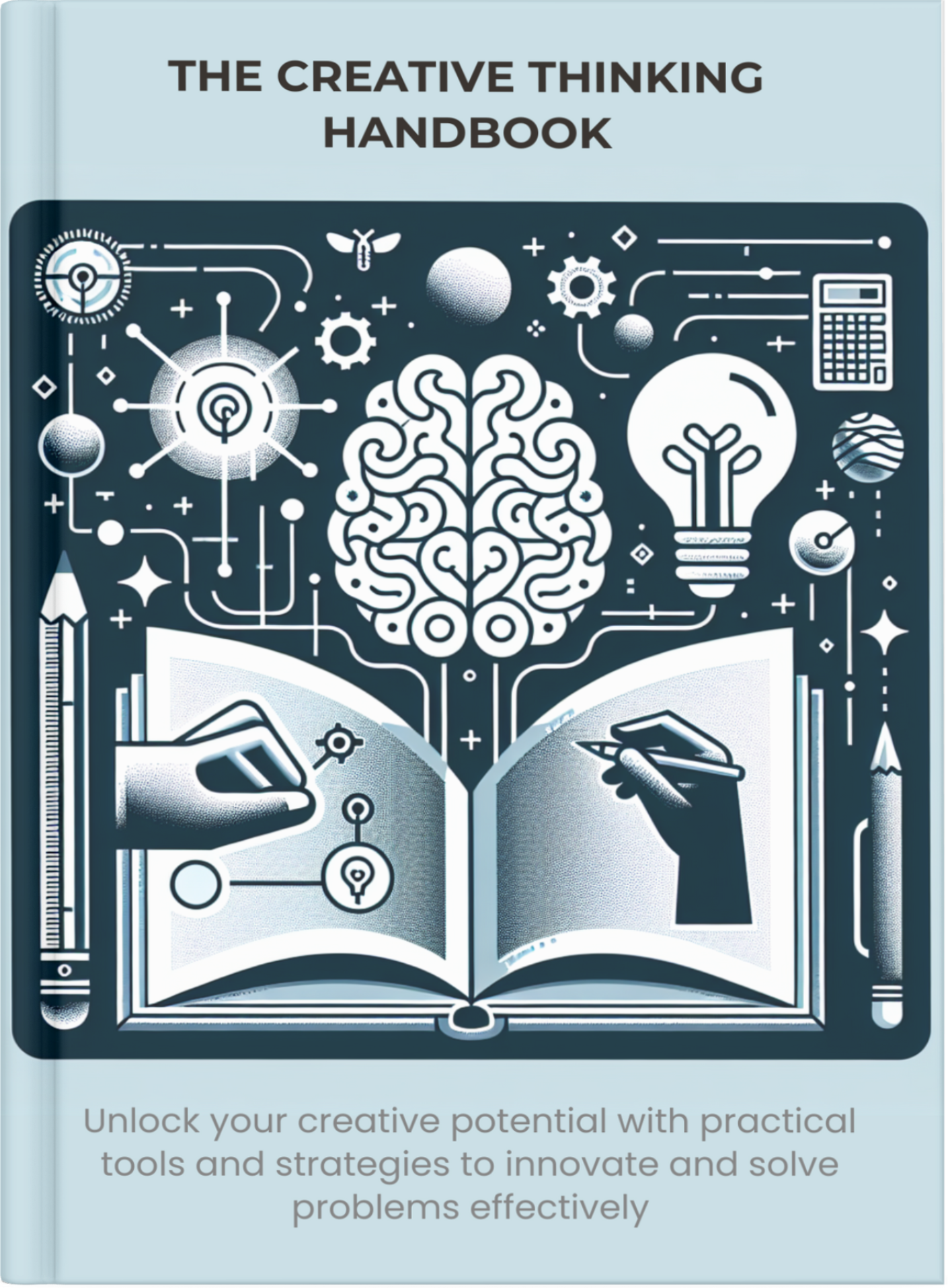
The Creative Thinking Handbook
Chris Griffiths & Melina Costi
The Creative Thinking Handbook by Chris Griffiths and Melina Costi is a comprehensive guide designed to help individuals and organizations enhance their creative thinking skills. The book provides practical tools, techniques, and strategies to foster innovation and solve problems more effectively. It emphasizes the importance of creativity in the modern world and offers actionable steps to develop a creative mindset.
0:000:00
Keypoint 1: Understanding Creativity
Creativity is often misunderstood as a mystical or innate talent that only a select few possess. However, creativity is a skill that can be developed and nurtured. It is the ability to generate new ideas, solutions, and approaches that are both novel and useful. Understanding creativity begins with recognizing that it is not limited to the arts; it is applicable in every field, from business and science to education and everyday problem-solving.
One of the fundamental aspects of creativity is divergent thinking, which involves exploring many possible solutions and thinking in non-linear ways. This contrasts with convergent thinking, which focuses on finding a single, correct answer. Divergent thinking encourages open-mindedness and the willingness to take risks, both of which are essential for creative breakthroughs.
Another key component of creativity is the ability to make connections between seemingly unrelated concepts. This process, known as associative thinking, allows individuals to draw on their knowledge and experiences to generate innovative ideas. By combining different elements in new ways, creative thinkers can develop unique solutions to complex problems.
To foster creativity, it is important to create an environment that encourages experimentation and values diverse perspectives. This includes providing opportunities for collaboration, as working with others can stimulate new ideas and approaches. Additionally, it is crucial to cultivate a mindset that embraces curiosity and a willingness to learn from failure. Mistakes should be viewed as opportunities for growth and learning, rather than as setbacks.
Understanding creativity also involves recognizing the role of intrinsic motivation. People are more likely to be creative when they are driven by a genuine interest in the task at hand, rather than by external rewards or pressures. This intrinsic motivation fuels passion and persistence, which are vital for overcoming obstacles and achieving creative success.
In summary, understanding creativity requires a shift in perspective. It is not a rare gift, but a skill that can be developed through practice and the right mindset. By embracing divergent thinking, associative thinking, and intrinsic motivation, individuals can unlock their creative potential and apply it to various aspects of their lives.
One of the fundamental aspects of creativity is divergent thinking, which involves exploring many possible solutions and thinking in non-linear ways. This contrasts with convergent thinking, which focuses on finding a single, correct answer. Divergent thinking encourages open-mindedness and the willingness to take risks, both of which are essential for creative breakthroughs.
Another key component of creativity is the ability to make connections between seemingly unrelated concepts. This process, known as associative thinking, allows individuals to draw on their knowledge and experiences to generate innovative ideas. By combining different elements in new ways, creative thinkers can develop unique solutions to complex problems.
To foster creativity, it is important to create an environment that encourages experimentation and values diverse perspectives. This includes providing opportunities for collaboration, as working with others can stimulate new ideas and approaches. Additionally, it is crucial to cultivate a mindset that embraces curiosity and a willingness to learn from failure. Mistakes should be viewed as opportunities for growth and learning, rather than as setbacks.
Understanding creativity also involves recognizing the role of intrinsic motivation. People are more likely to be creative when they are driven by a genuine interest in the task at hand, rather than by external rewards or pressures. This intrinsic motivation fuels passion and persistence, which are vital for overcoming obstacles and achieving creative success.
In summary, understanding creativity requires a shift in perspective. It is not a rare gift, but a skill that can be developed through practice and the right mindset. By embracing divergent thinking, associative thinking, and intrinsic motivation, individuals can unlock their creative potential and apply it to various aspects of their lives.

